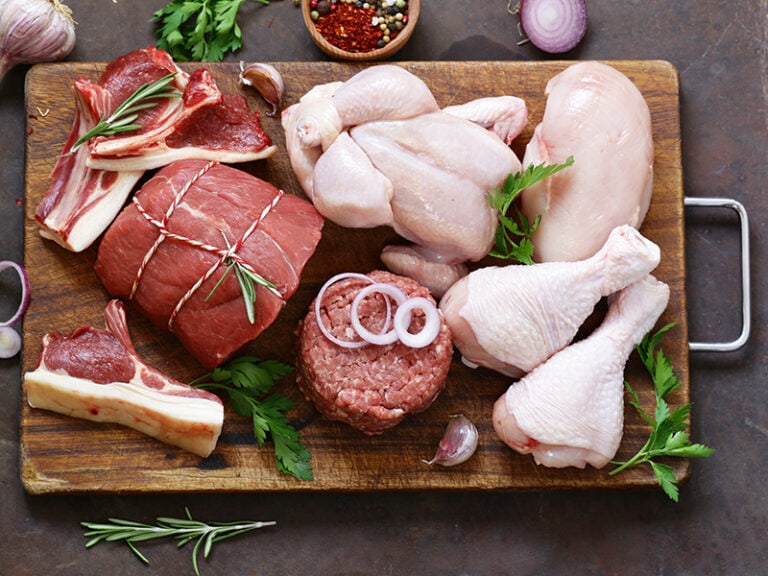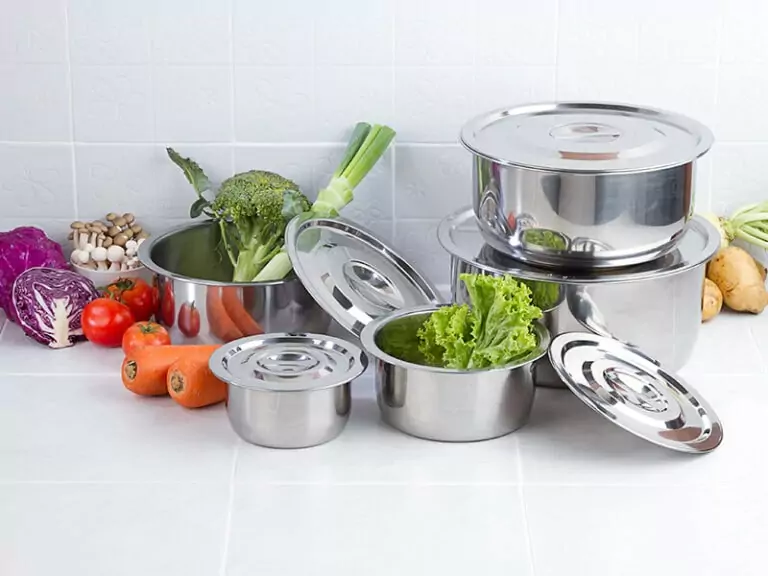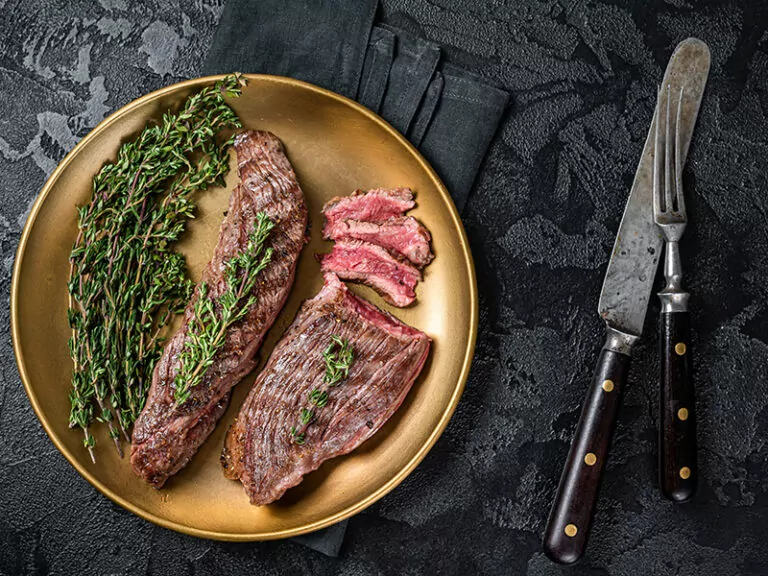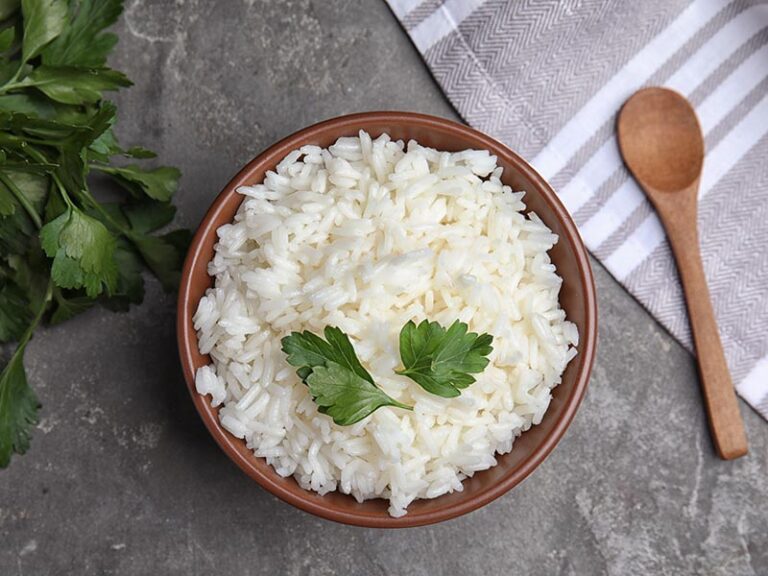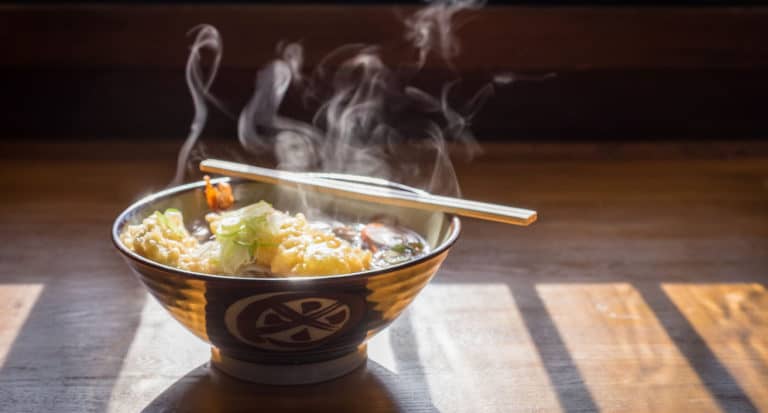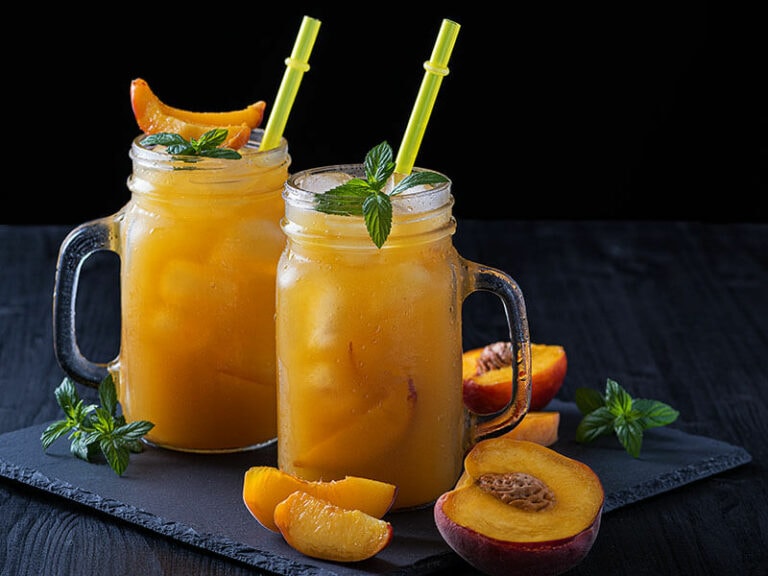Wine yeast and bread yeast are common terms in the culinary world, as you may encounter them in many relevant recipes. Understanding these two kinds of yeasts is beneficial for homebrewers and bakers. As a beginner, you won’t want to confuse them and mess things up.
A small error in the ingredient list can lead to a vast food disaster. Therefore, read on to find out when you can use wine and bread yeast interchangeably. There are many things to break down along the way, from alcohol tolerance and fermentation to survival mode. Let’s go!
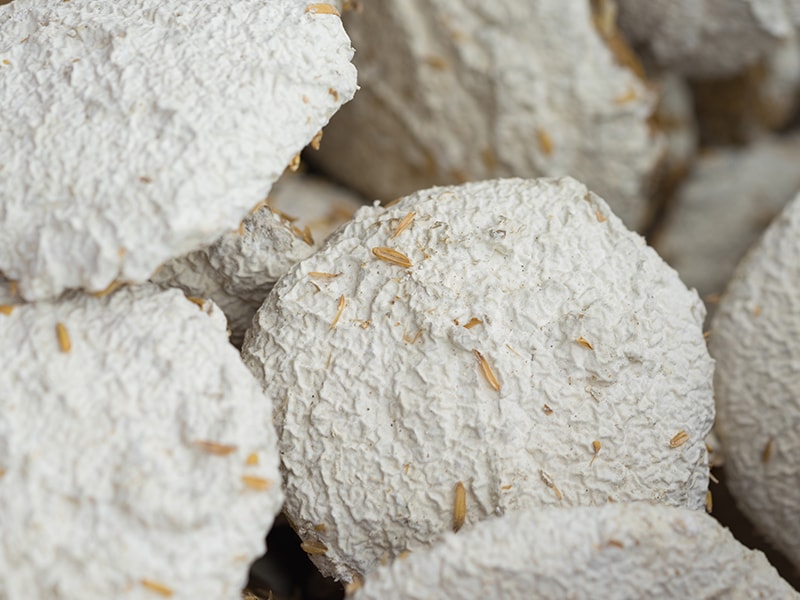
A Brief History Of Yeast
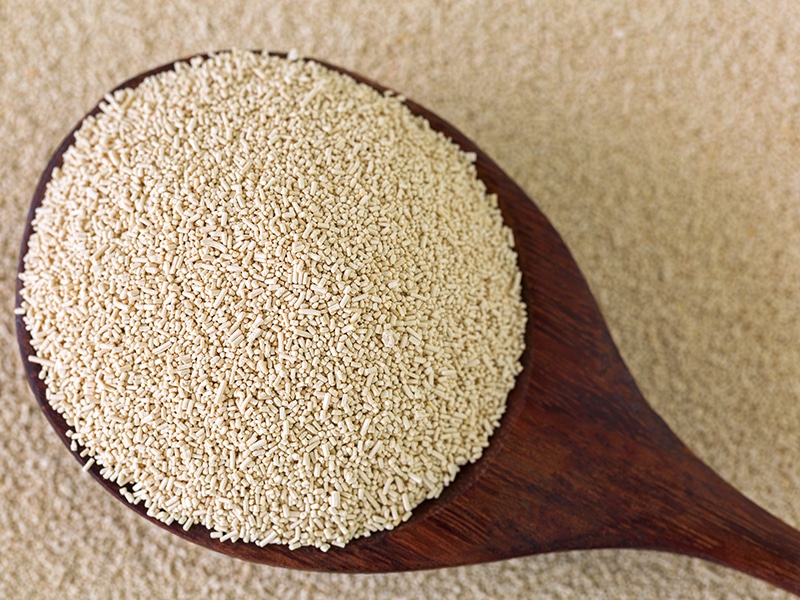
Several historical shreds of evidence confirmed the availability of yeast 5000 years ago (1). It appeared in daily human life even before the creation of written language. Ancient people didn’t know it was the agent behind alcoholic fermentation and dough leavening.
The twist occurred in the late 1800s, when people finally grasped some proper scientific knowledge of this single-celled organism thanks to the development of microscopes. This historic discovery was the foundation of baker’s yeast production in the 20th century.
Yeast is a single-celled fungus that shares the same root as edible mushrooms. These microorganisms live off the nutrients in food, then emit carbon dioxide and alcohol. This process is alcoholic fermentation, an essential part of bread and winemaking.
If you’re curious about the yeast’s origins, find the answer here.
What Do You Know About Wine Yeast?
Now let’s move on to the main topic. Judging from its name, you may realize people mostly use this yeast for wine fermentation, but there is more to explore.
Understanding Wine Yeast
Generally speaking, wine yeast is a member of the Saccharomyces Cerevisiae species (2). It works by fermenting the sugar of fruit juices into alcohol and carbon dioxide. Due to the high alcohol content, people use this type of yeast in winemaking.
About 150 varieties of wine yeast are available, given in liquid or powdered forms. Each one is suitable to produce a particular wine based on flavor profiles and fermentation capability. For example, champagne yeast has higher alcohol levels and makes more bubbles than others.
Although its alcoholic level is even higher than beer yeast, wine yeast is not a good agent for brewing because it can’t work with maltose, the primary sugar for beer fermentation.
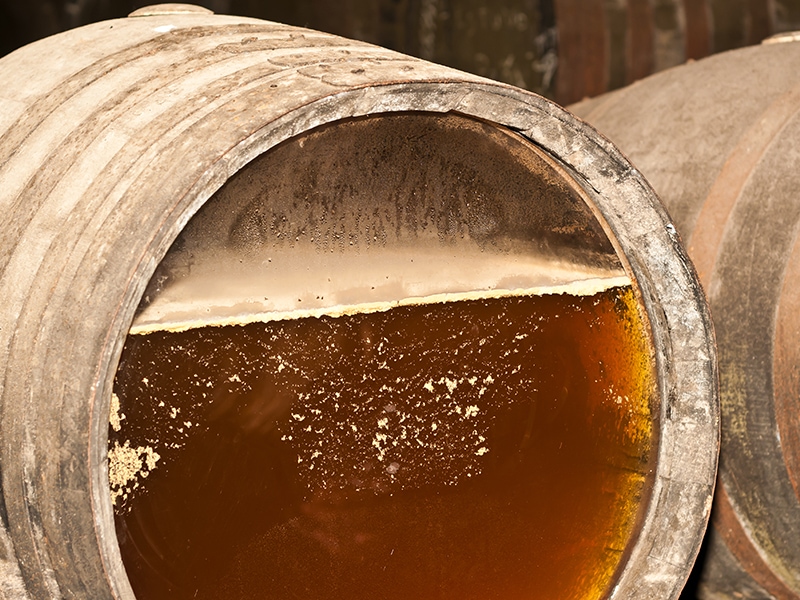
Best Wine Yeast Strains You Should Know
As I mentioned earlier, dozens of wine yeast varieties are on the market, and I won’t bother you with that endless list. Below are some of the most well-known strains that you may encounter daily.
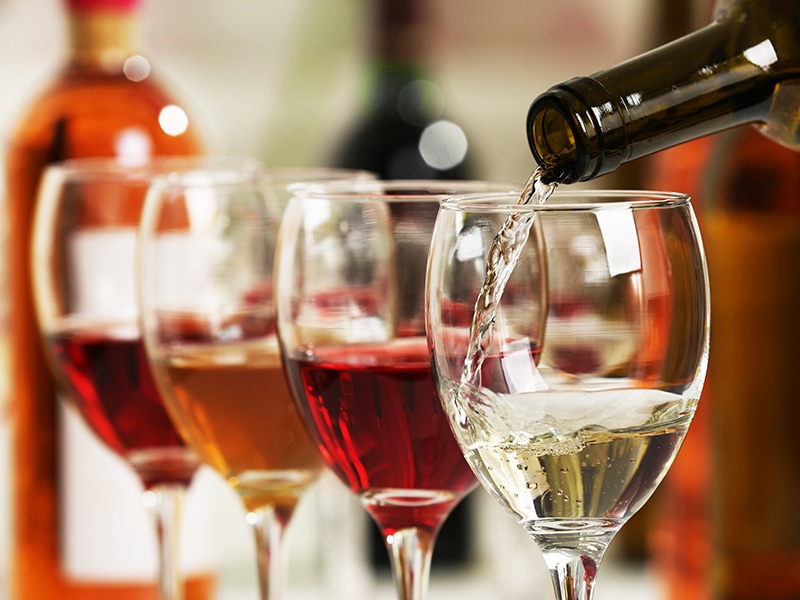
Lalvin EC-1118 Champagne Yeast
EC-1118, also known as champagne yeast, is the most popular and all-rounder strain. Thanks to its strong fermentation characteristics and resilience to diverse environments, this one is the best agent for producing fruity wines, ciders, or sparkling.
Lalvin RC212 Burgundy Yeast
Originally from the Burgundy region of France, RC212 is a solid choice for red wines with spicy flavors. It’s suitable for promoting the final color, taste, and structure of wines.
Lalvin D47
D47 is a strain isolated in the Cote Du Rhone region, designed to deliver strong tropical and citrus notes. While 59°F – 86°F is the safe range for it to be active, some suggest that D47 works best in 62°F – 68°F, which is ideal for the production of dry white or rosé wines.
Here is a quick look at some of the best wine yeast on the market:
Let’s Talk About Bread Yeast
Enough with the wine yeast! It’s time the bread yeast takes the central stage. Bread yeast is more common and easier to find than its siblings at many markets and stores.
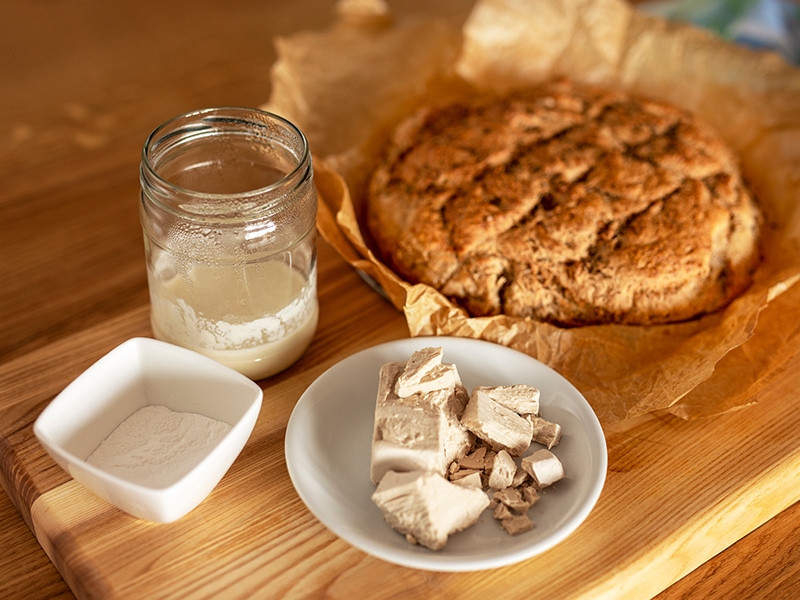
A Thing Or Two About Bread Yeast
You may know other names for bread yeast, such as baker or baking yeast. Simply put, this yeast strain acts as a leavening agent in bakery products. It releases carbon dioxide and ethanol to allow the dough to rise.
Therefore, yeast directly impacts the quality of the crumb and the final volume of the finished loaves. It also affects the aroma, texture, and fineness of your bakery goods due to the interaction of the ketones in yeasts and heat.
Unveil the secret behind kneading and the action of yeast on the dough rise:
Types Of Bread Yeast
Bread yeast often comes in dry and wet forms. Each has its advantages, depending on what you plan to bake. Apart from that, their shelf-life is another criterion that you should consider.
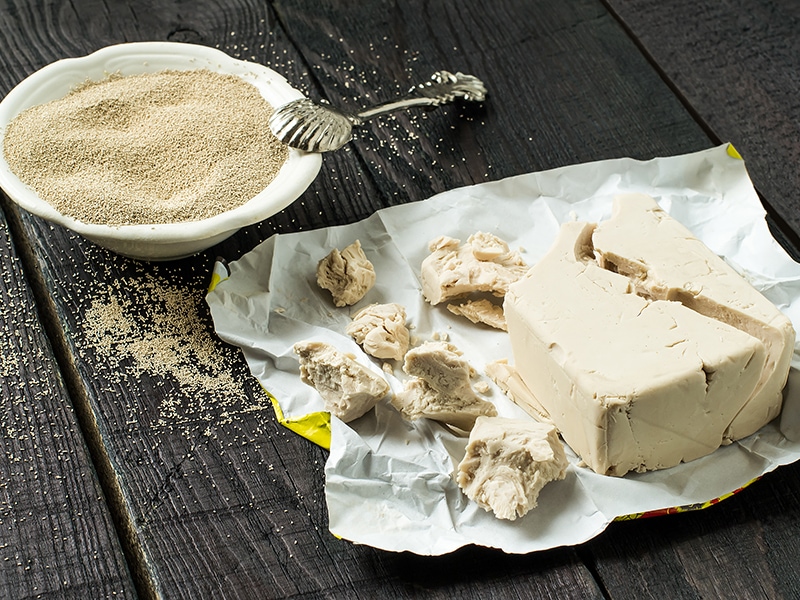
Active Dry Yeast
Other names for dry yeast are active or alive yeast. If a bread recipe calls for yeast, this is usually the one. Since dry yeast hydrates fast, it dissolves quickly into wet ingredients. You must activate it with warm water before adding it to the dough.
Nowadays, people can find active dry yeast at any supermarket or store. It may last for a year when sealed tightly in a vacuum bag.
Instant Dry Yeast
This type of baking yeast is a favorite to many bakers since it doesn’t need proofing at all. Once you open its package, instant yeast can get straight into the business with other ingredients.
Wet Fresh Yeast
Unlike dry yeast, wet strains (or fresh yeast) are more challenging to handle. Due to its short shelf life, it will rot quickly and need proper assistance. Fresh yeast must be used daily, so buying this one would be a waste if you don’t bake regularly.
Side-To-Side Comparisons Of Wine Yeast And Bread Yeast
Not all yeast are the same, and I’m here to tell you what they have in common as well as their differences. There are five key differences between these things, including alcohol tolerance, fermentation, survival mode, and more. Let’s find out now!
Join this 30-day experiment between wine yeast and bread yeast on the fermentation rates and see the final results. Watch this video:
Alcohol Tolerance
Alcohol tolerance refers to the percentage of alcohol in water that yeast can tolerate during fermentation. In other words, when the yeast crosses this limitation, it’ll become inactive and stop fermenting.
As expected, wine yeast can tolerate double the alcohol levels of bread yeast, up to 17%. Some wine yeast, such as Mangrove Jack SN9, can reach 18%.
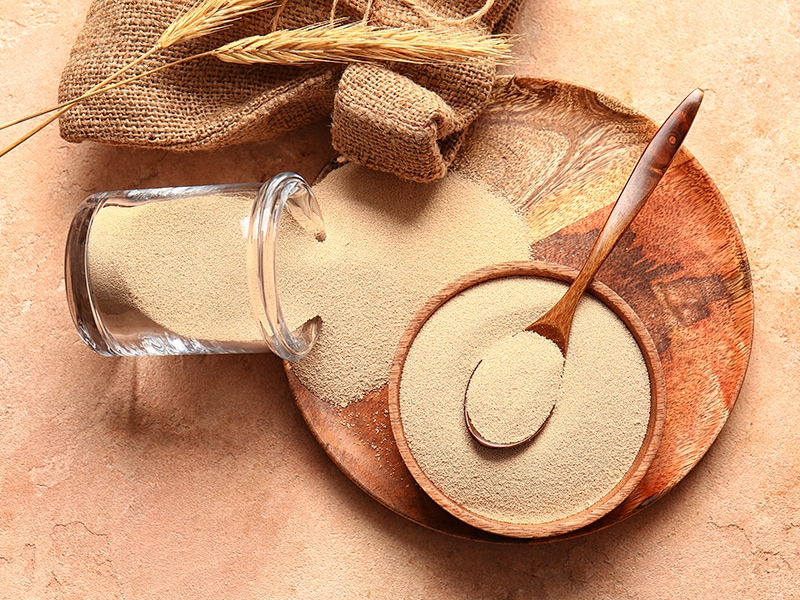
Fermentation Rate
In terms of fermentation, each yeast also provides different answers. Since it releases gas slowlier, wine yeast is slow-fermented. This long process may take from weeks to months or years to finish. In fact, you may wait up to 24 hours to see the first signs of its fermentation.
On the other hand, bread spread is hyperactive and produces more gas, which is suitable for fast fermentation. The required time for this process may vary from 0 – 15 minutes (no-time dough) to 8 hours (artisan bread), depending on the type of baked goods.
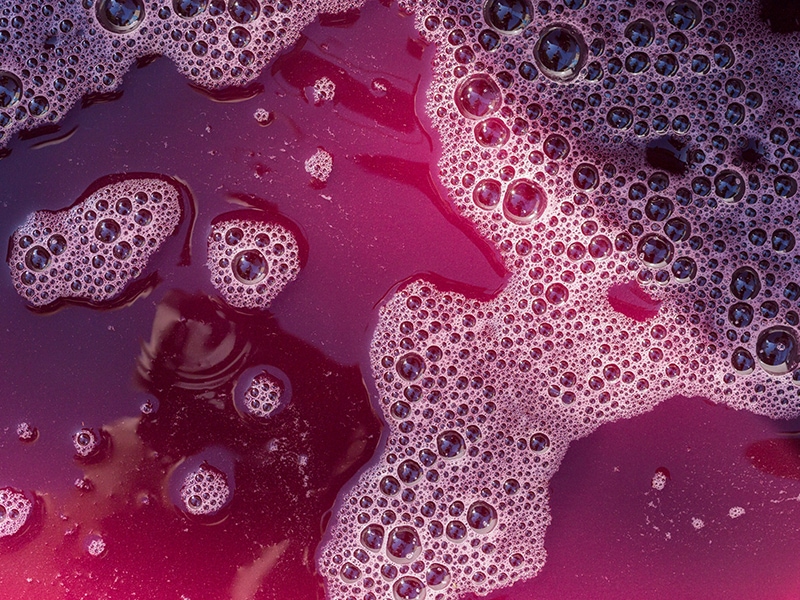
Survival Mode
The survival mode of yeast refers to whether this microorganism is still alive when it’s used. As you can see from the table above, they both have different statuses.
There is no fixed answer for wine yeast, as it can be active or inactive when not in use. In contrast, the bread strains are always alive and ready to work. However, whether you plan to bake or brew, activating steps are equally necessary.
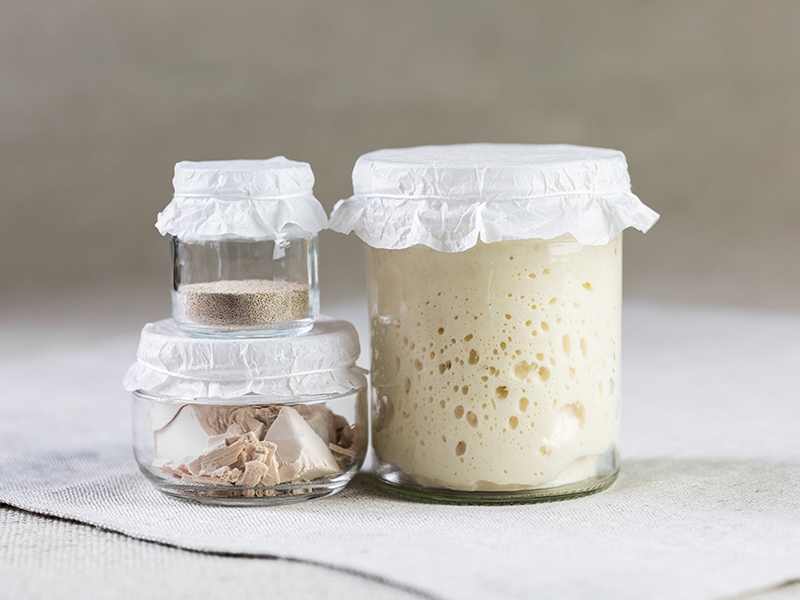
Nutrition Value
Let’s be clear: this section will deal with whether the yeasts can be used as a nutritional supplement. When inactive, both wine yeast and bread yeast are edible as nutritional supplements. However, be mindful that the inactive yeast doesn’t taste as good as you expected.
Dead yeast can be a good source of B vitamins, minerals (zinc, manganese, selenium, etc.), and proteins as long as it is consumed in moderation. Nutritional yeast, which is manufactured purpose, is the best variety to choose from.
Conversely, you should not eat them directly in active forms (raw yeast). Once consumed raw, the yeast will stay in your intestines and cause severe damage to your body. Eating live yeasts does more harm than good, so it’s better to let them do their jobs in baking and brewing.
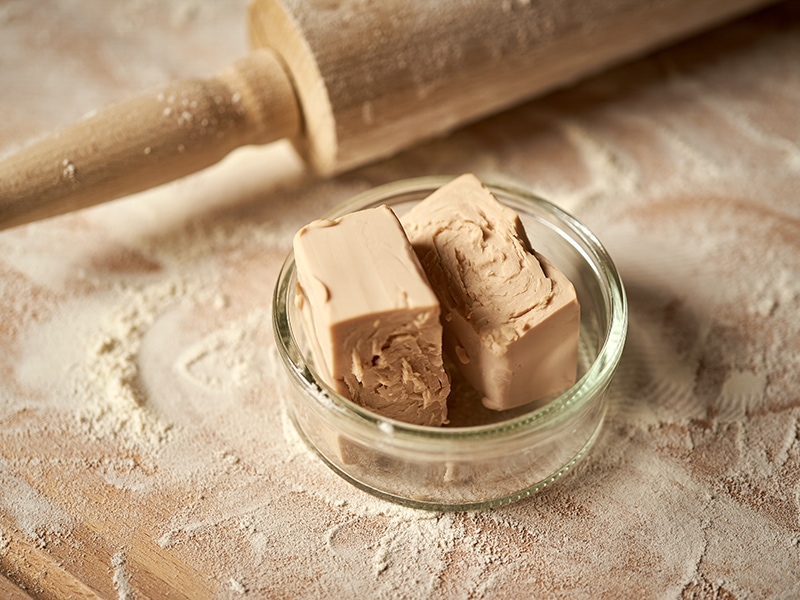
Interchangeability
You already know about the yeast’s nutritional value and its roles in designed areas. But have you ever thought about using them as substitutes for each other? Let’s see if people can use bread yeast in winemaking and vice versa.
Bread Yeast’s Use In Winemaking
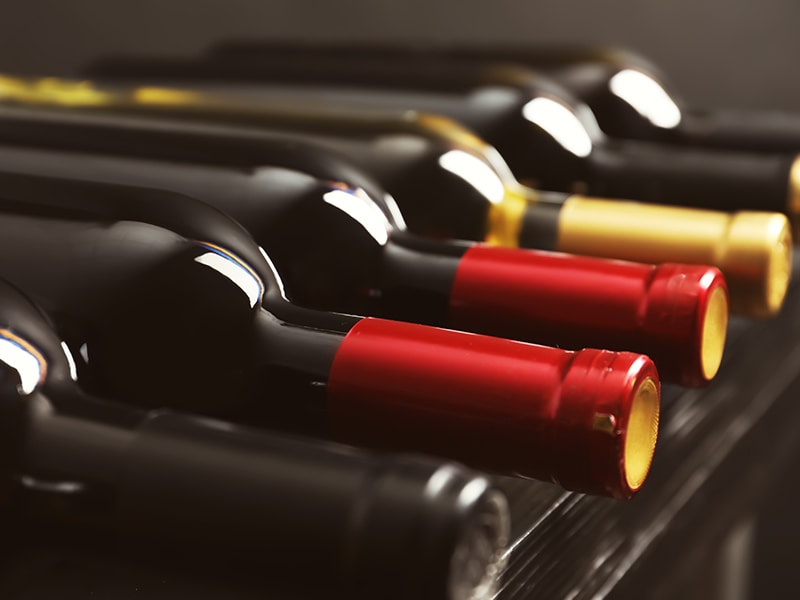
Good news for those interested in making homemade brewing, it’s possible to use bread yeast in winemaking. But after all, these two strains are different, so bread-yeast-used wine is no rival to other high-quality wines in the market.
This is due to the varying alcoholic tolerance, as bread yeast won’t function in an environment with an alcohol content of over 10%. Additionally, the most noticeable difference is the sweet taste, bread-like flavor, and low alcoholic level.
Is it possible to use bread yeast for winemaking? Check out the answer here!
The Possibility Of Wine Yeast For Making Bread
I won’t stop you if you want to experiment with baking bread with wine yeast since the yeasts work similarly. Nevertheless, the result won’t be the same.
You already know that dough needs a small amount of alcohol from the yeast during the fermentation to rise. However, with a high alcoholic content of wine yeast, you may end up with an alcoholic-tasting or subtle estery-flavored bread.
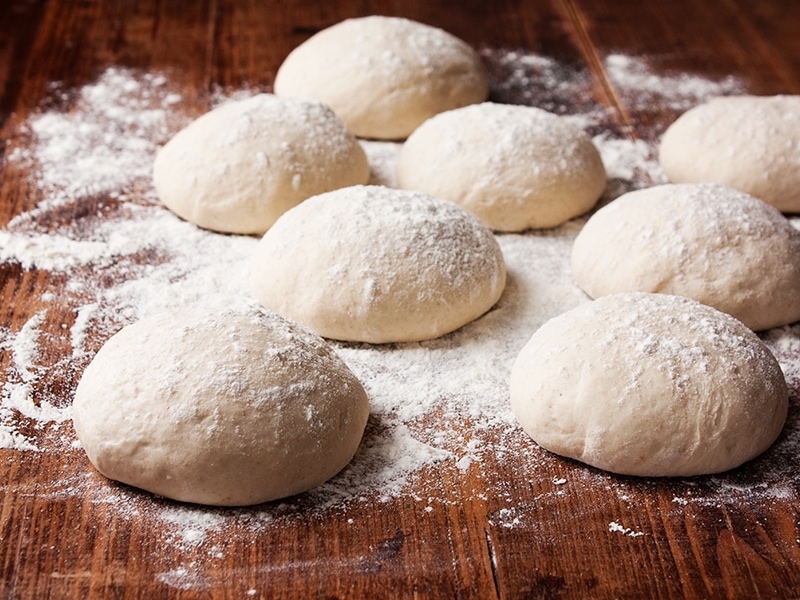
How To Activate Bread Yeast
Apart from the instant yeast, activating or proofing these microorganisms is an unavoidable step to test whether they are alive or inactive. Different yeast will have other ways to activate. Read carefully and apply it to your on-hand items.
Ingredients
Activating the yeast is easy, and there is no complicated equipment or components involved. If you want to make sure the process runs out smoothly, prepare these items:
- ½ cup warm water (105ºF – 115ºF)
- 1 teaspoon of sugar
- 2 ¼ teaspoons of dry yeast (a single packet)
- 1 bowl or container
Every jar or packet of yeast may contain 25% of inactive yeast cells. But don’t throw it away, as there are still chances for a successful batch.
Unleash The Dry Bread Yeast With Warm Water
As mentioned above, the ultimate way to activate bread yeast is to dissolve it in warm water. Below is the detailed instruction on how to do it. Just a little hand work, and the result will come out quickly.
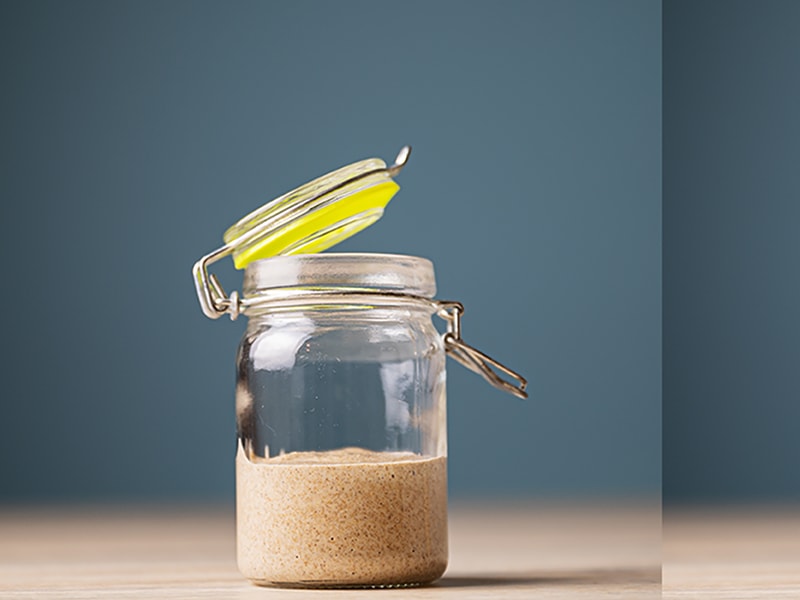
Step 1: Combine Warm Water With The Yeast
Pour the warm water into the content of yeast and sugar. Next, stir until they combine into one. Then let the mixture stand at room temperature and return after 5 – 10 minutes. It’s time to check for yeast viability.
Step 2: Judge The Size
If the yeast has grown to double size, rest assured that it’s activating, and you can carry on to the next steps. Otherwise, wait for another 5 – 10 minutes. After that, if you still don’t see many signs of the yeast’s growth change in size, start over with a new batch.
Step 3: Start Your Recipe
If your yeast has successfully activated, you can combine it immediately with other ingredients in whatever cooking recipe. In its essence, bread yeast is quick to activate, so it’s suitable for fast fermentation.
Follow these activating steps to make sure your yeast is active before using it.
Guide To Rehydrate Your Wine Yeast
Activating wine yeast is essential in making wine. If you’re a newbie, don’t worry because it’s much simpler than you thought. The only downside is that it takes longer than the bread yeast.
Without A Starter
In terms of activating wine yeast, there are two options: with or without a starter. Feel free to follow whichever way suits you best. Here is how you do it without a starter.
Ingredients
Like bread yeast, what you need to activate the wine yeast is affordable and easy to find. The only problem is the water’s temperature. Too hot water will kill the yeast, while if it’s too cold, the activating won’t work. Be sure to have all the above items before getting started:
- Warm water (100ºF – 105ºF)
- Active dry wine yeast
- Container (s) with cover(s)
- Measuring cup
The best part is that this method doesn’t require an exact measurement, so modify it according to your liking. But if you need an estimation, follow the ratio of 5:1 between water and yeast.
Step-By-Step Instructions
I understand that rehydrating wine yeast may take quite a time, but this process is super easy. All you need is patience and precisely temperature-measured water.
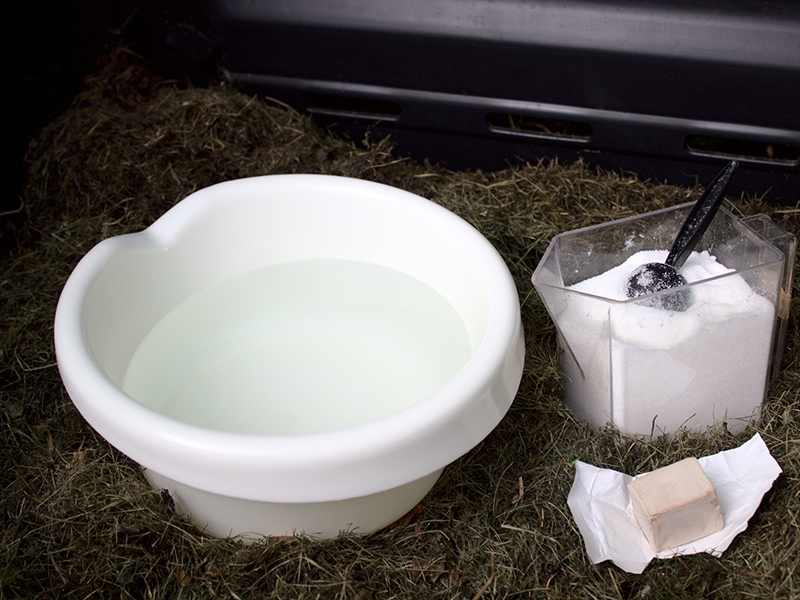
Step 1: Mix And Stir
Pour all the ingredients mentioned above into the container and stir them together. After the mixture becomes one, use a lid to cover the liquid and leave it to proof for about ½ hour.
Step 2: Check Viability
After 30 minutes, return to check if the yeast is viable by watching the bubbles. The appearance of air balloons shows that these microorganisms are alive and ready to reproduce. If the bubbles don’t show up at this point, it’s time to make another attempt.
Step 3: Let It Rest
Cover the container again and leave the yeast to stand still for 6 to 12 hours before adding it to the must. Remember to stir the mixture up before using.
With A Starter
With this method, you will carry out the same activating steps as mentioned above. Therefore, the ingredients are also similar. However, the twist here is the additional 1/2 cup (118.4 ml) of strained must or pre-sweetened fruit juice.
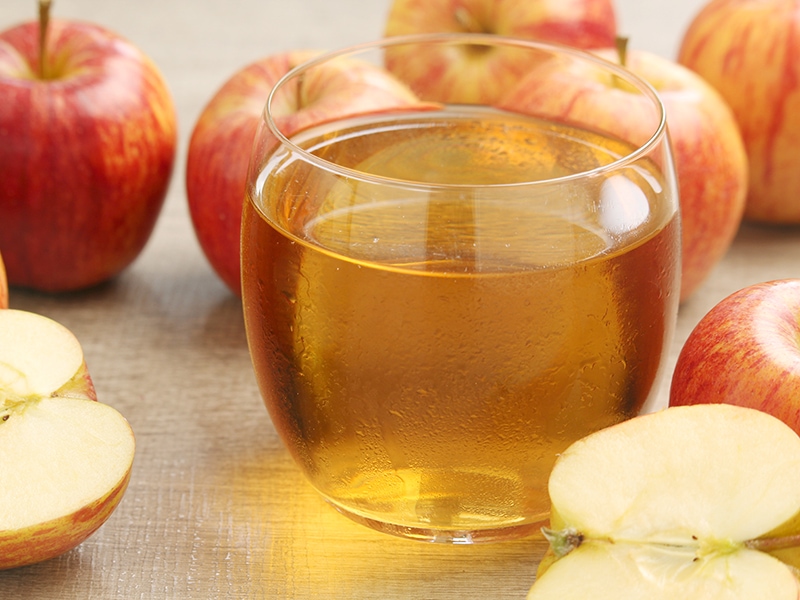
Step 1: Dissolve Wine Yeast
Follow the same direction of activating wine yeast in warm water. Give it a rest and return after ½ hour to check its survival mode. If the bubbles rise, cover the lid again and set the liquid aside.
Step 2: Prepare The Starter
Sanitize another container and pour inside ¼ cup (59.2 ml) of pre-sweetened fruit juice or strained must. Mix it with your prepared yeast mixture.
Step 3: Cover And Wait
Place the lid and set it aside for the next 4 hours. When the time comes, put another ¼ cup (59.2 ml) of juice into the mixture and seal the jar carefully. Give it a 4-hour stand, and your yeast is ready to work with the must.
Ideas To Make Use Of Your Wine Yeast
From the wine yeast, you’re free to create different alcoholic drinks. If you need to figure out what to do first, take a glance at my recommendations below. They’re great starts for beginners in the brewing world.
Peach Wine
Nothing can go wrong with this classic, as peaches are one of the easiest choices for brewing. Interestingly, the blush of the fruit skin significantly affects your wine color. For example, if the rind is on the red side, your wine will be a shade of pink. So make sure to choose the right ones.
Plum Wine
This recipe is a great way to use your leftover plums. To be honest, homemade plum wine won’t have the sweet taste as the ones in stores, based on the sugar level of the fruit. I recommend refined sugar since you won’t have to dissolve it in boiling water before using it.
What You Can Cook With Bread Yeast
There are numerous bakery goods to try with bread yeast, and you’re welcome to try some today. The recipes below guarantee success, even though you’re not a skillful baker.
No-Knead Rustic Bread
Baking bread is a hard task for novice bakers. But this no-knead rustic bread recipe will help you overcome the nightmare with easy step-by-step instructions and only four ingredients. Best of all, proofing yeast is no longer challenging as it can join directly with other dry ingredients.
Milk & Honey Whole Wheat Bread
Making this milk & honey whole wheat bread for breakfast is a good idea. Sweet, fluffy, and aromatic large loaf of bread is what you’ll get after about three hours. Double the recipes if desired since the loaves can stay fresh for several days.
FAQs
My post is already very informative, but the more, the merrier. It won’t hurt to gain some extra insights. Scroll down and continue reading because there might be questions you are still looking for answers to.
Let’s Put Your Yeast To Good Use!
Have you understood the differences between these siblings and how to use them yet? Though you’re not a professional in the culinary world, it would be fun if you tried to experiment with their uses in various ways. Making bread with wine yeast and vice versa – why not?
I hope you have a great time reading this article. Don’t forget to give it a like and share since these actions motivate me greatly. Also, feel free to write what you think about this article in the comment section. I’ll make sure to read them. See you next time!
References
1. Duan, S.-F. et al. (2018) The origin and adaptive evolution of domesticated populations of yeast from Far East Asia, Nature communications. Nature Publishing Group UK.
2. Cordente, A.G. et al. (2012) Flavor-active wine yeasts, Applied microbiology and biotechnology. Springer-Verlag.

